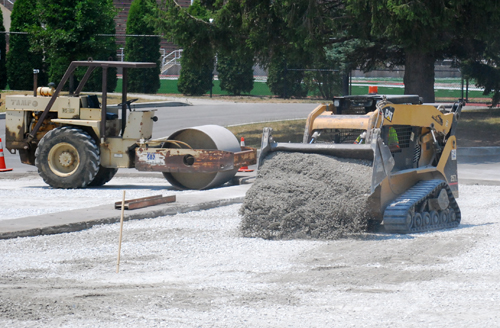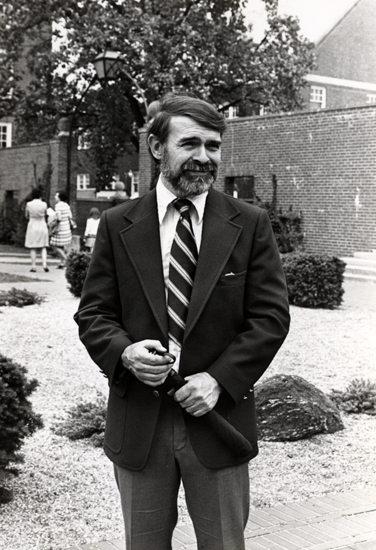 Ian Grant ’13—Campus is always changing.
Ian Grant ’13—Campus is always changing.
Last Tuesday morning I stumbled out of College Hall on my way to work at Hovey Cottage and saw that the parking lot between Martindale and the Campus Services building was gone. A backhoe was shoveling dirt and slabs of asphalt into the back of a dump truck while workers in orange neon vests marked the surrounding grass with spray paint.
Minutes later a forklift drove around the Mall and away from Center Hall carrying three-foot-long logs stacked neatly on its tilted forks. Two stumps sat like scabs on the lawn in front of the President’s office; sap had congealed into little droplets where the trees had been cut.
The hedges between Center and the Mall were also gone. The exposed stone base of the building looked stripped, fresh, almost as if it were new again, simply because I’d never seen it before.

As part of my internship this summer, I’ve been scanning and organizing an archive of photographs from the past 40 years for the Office of Communications and Marketing. Hundreds of static photographs held neatly in plastic binders reveal a campus that never stops evolving.
Some of these changes are minor—such as the parking lot. A week ago it looked like a parking lot, a week from now, after the work is done, it will still look like a parking lot.
Then there are larger changes—those that take on a life of their own. Before I saw this photograph of Professor Aus Brooks ‘61 standing in front of the arch between Goodrich and Sparks, I hadn’t known there was once a wall connecting the two buildings. I’d never questioned the existence of this isolated arch. I’d never needed too. For me (and most of my classmates) the arch is the stuff of legend: We’re told by upperclassmen that if we walk under it before we graduate, we’ll fail comps, that this fate befell a senior 100 years ago, that in his distress he hung himself from that arch.
Now I’m told that it has only stood alone for eight years, that when the wall was taken down in 2004, many thought the arch looked out of place. Perhaps the tradition was spawned by a need to justify keeping this lone arch without a wall. I just don’t know.
 Cutting down a couple trees and tearing up asphalt is far from establishing campus traditions. But the Wabash campus I know is not the same Professor Brooks knew in the 1960s. The bushes in front of Center Hall will likely be my memory of the building. When they were planted in the 1960s they must have looked as foreign as their absence is to me.
Cutting down a couple trees and tearing up asphalt is far from establishing campus traditions. But the Wabash campus I know is not the same Professor Brooks knew in the 1960s. The bushes in front of Center Hall will likely be my memory of the building. When they were planted in the 1960s they must have looked as foreign as their absence is to me.
Campus Grounds Manager Tim Riley, who designed the new landscaping, sees this as a great opportunity to improve the look of the campus. He’s also heard that not everyone likes the changes. For me, they’re not a bad thing; in fact, they may be a necessary thing. That doesn’t mean they aren’t still a bit jarring. And the incoming freshman this year will ask, “What bushes?”
Ian Grant is an intern this summer with Wabash Magazine and the College’s Office of Communications and Marketing.